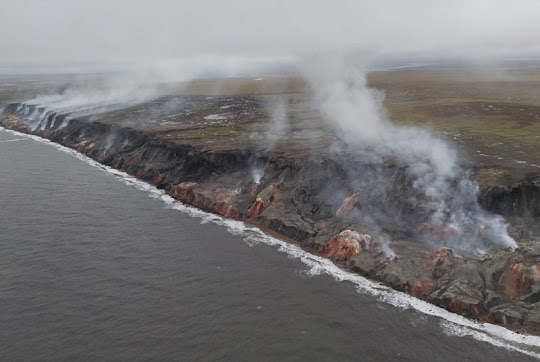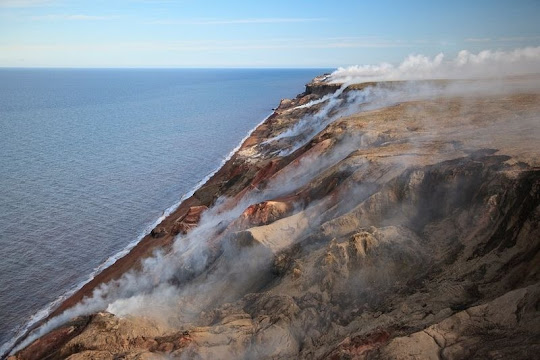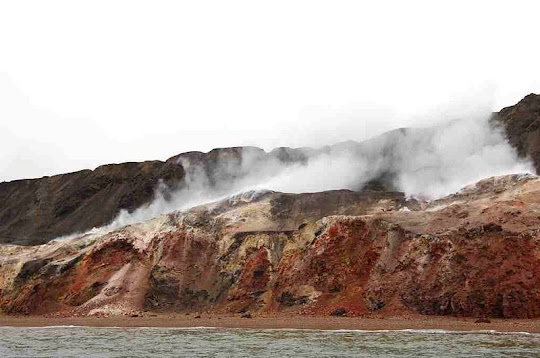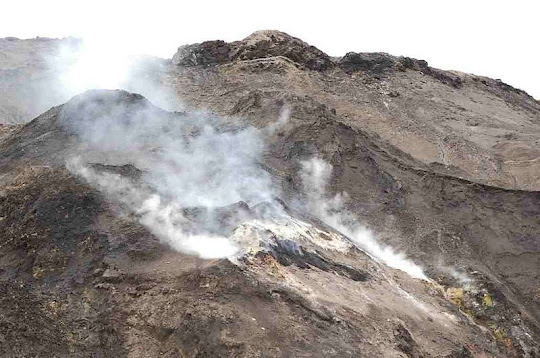The Investigator sailed north through the Pacific and entered the Arctic Ocean by way of Bering Strait, sailing eastward past Point Barrow, Alaska to eventually link up with another British expedition from the north-west. When McClure’s search party approached the mouth of the river Horton on Beaufort Sea near Cape Bathurst in Canada's Northwest Territories, he noticed smoke in the distance. Suspecting the smokes could be from campfires, perhaps from Franklin, McClure at once sent a search party to investigate.

The party found not flames from Franklin's campfires, but thick columns of smoke emerging from vents in the ground. The sailors returned with a sample of the smoldering rock, and when they set it down on McClure's desk it burned a hole in the wood.
McClure assumed the rocks to be volcanic, but the truth was something else. The mountains contain large deposits of sulphur-rich lignite (brown coal) which ignite spontaneously when the hills erode and the mineral veins are exposed to the air. The fumes they give off contain sulphur dioxide, sulphuric acid and steam, all of which has acidified the surrounding shallow pools creating a pocket of distinctive acidic biota, in contrast to the typically Arctic biota in adjacent alkaline ponds.
The Smoking Hills is believed to have been burning for centuries, and will do so for many more.






Source
